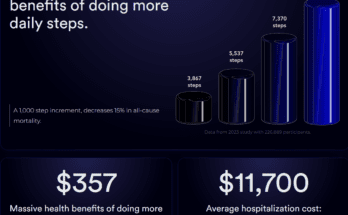Climate researchers say the idea of putting a “climate price tag” on an individual storm might help the public understand how global warming affects them directly. That’s especially true in places like North Carolina, which continues to see a boom in coastal development even as the severity of hurricanes is worsening under climate change, says Hans Paerl, a professor of marine and environmental sciences at the University of North Carolina at Charlotte. “Coastal watersheds are taking the brunt of the flooding, and sea level rise adds to the water problem,” he says. “It brings the water further inland.”
Paerl reviewed historic flood and rainfall records since the late 1800s and found that catastrophic hurricane-driven floods have increased dramatically in the past 20 years, according to a study published in 2019 in the journal Nature Scientific Reports. The study concluded that there has been a shift in historic weather patterns that are now bringing more rain to the coastal region during each storm.
In recent years, these floods and rain have washed hog waste from North Carolina’s pork farms into nearby waterways, damaging coastal ecosystems and valuable commercial fisheries. But the worsening flooding hasn’t stopped people from moving to the area, says Paerl, who has resided in Beaufort, North Carolina, for the past 40 years. “Real estate is booming. People still want to build houses here.”
And there doesn’t even have to be a hurricane for coastal residents to be faced with climate-change-related flooding problems. Deluges that happen when skies are clear—so-called nuisance flooding—are also rising in cities like Miami; Norfolk, Virginia; and Charleston, South Carolina, according to a study published in March. Those researchers found that out of 40 coastal tide gauges operated by the NOAA, nearly half had measured more nuisance flooding days since the mid-19th century because of higher local tide ranges. Cities built along estuaries showed the biggest tidal changes, the result of sea level rise combined with dredging operations to deepen harbors for shipping.
As the number and intensity of tropical storms in the Atlantic Ocean has increased in recent years, NOAA officials were forced in April to recalculate their statistical average for a “normal” hurricane season. The new normal is now 14 tropical storms, up from a previous yearly average of 12. That adjusted figure includes seven storms that eventually become powerful enough to be classified as hurricanes. (Once a tropical storm’s winds reach 74 miles per hour, it is dubbed a Category 1 hurricane. From there, hurricanes progress all the way up to Category 5, packing 157 mph winds, according to the Saffir-Simpson hurricane wind scale.)
Last year was a record-breaking Atlantic season, with 30 tropical storms, 13 of which became hurricanes. NOAA officials are expected to announce their 2021 forecast on Thursday, but in the meantime, the commercial weather forecasting firm DTN, which provides data to airlines, farms, trucking firms, and other weather-dependent industries, is predicting another above-average season with 20 tropical storms, nine hurricanes, and four major hurricanes with a strength of Category 3 or above, says Renny Vandewege, the company’s vice president of weather operation.
“We think the East Coast of the United States has more of a landfall threat this year, whereas, in 2020, it was more in the western Gulf of Mexico,” Vandewege says. “This year we think it’s more along the Florida coast, up through the Carolinas, and then up through the northeast of the US, as well.”
More Great WIRED Stories
📩 The latest on tech, science, and more: Get our newsletters!The 60-year-old scientific screwup that helped Covid killIt’s true. Everyone is multitasking in video meetingsThe best personal safety devices, apps, and alarmsWhy not turn airports into giant solar farms?Google gets serious about two-factor authentication. Good!👁️ Explore AI like never before with our new database🎮 WIRED Games: Get the latest tips, reviews, and more🏃🏽♀️ Want the best tools to get healthy? Check out our Gear team’s picks for the best fitness trackers, running gear (including shoes and socks), and best headphonesRead More


